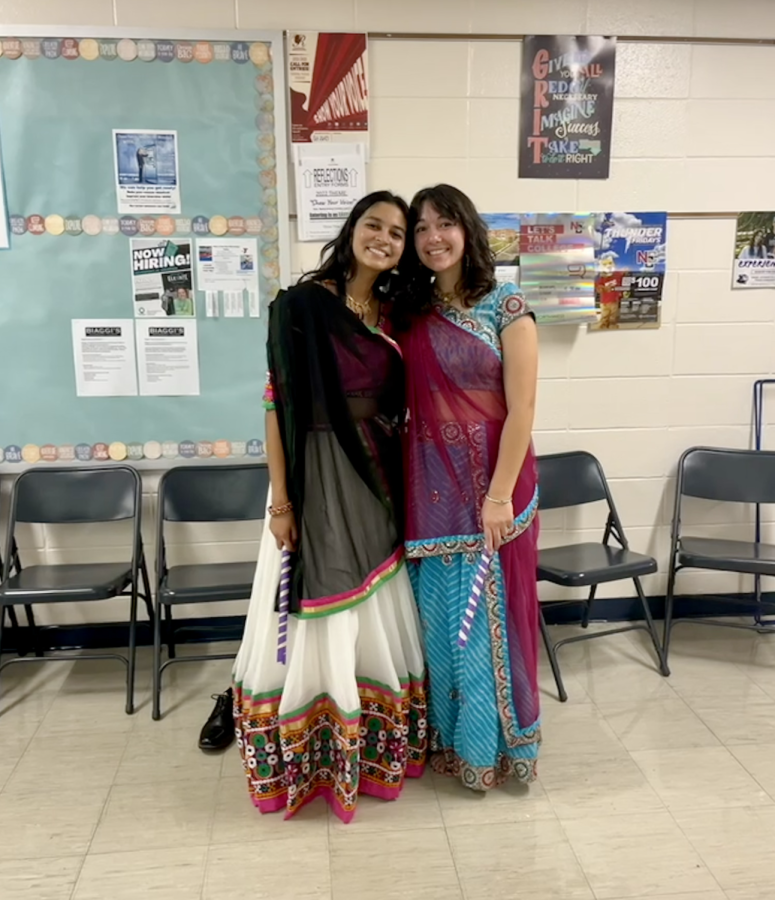Commemorating the inauguration of the Nita Mukesh Ambani Cultural Centre (NMACC), the red carpet ceremony held in Mumbai, India on April 1 touted the biggest names in Hollywood. From model Gigi Hadid to YouTuber Emma Chamberlain, global icons attending the event were showered with praise for their extravagant attire.
To people unfamiliar with Indian wardrobes, the mere exoticness of these celebrities’ attire was enough to garner votes of approval from social media users around the world. People in the Indian community couldn’t help but feel pride towards the rare instance of culturally appropriate and appreciative displays of Indian culture.
To junior Rupika Jai Ganesh, this event was a refreshing change from the lack of appropriate displays of Indian culture by Western media. “I personally don’t know if the intricacy and beauty of Indian attire is recognized enough in Western media and I think that Zendaya and Gigi, two prominent Western celebrities, wearing gorgeous designer saris helped bring more recognition to how stunning traditional Indian clothes can be,” said. “On social media especially, I saw so many people talk about how beautiful and ornate Gigi’s blouse was and how gorgeous the sparkly designs were on Zendaya’s sari.”
Often, when Indian culture is worn by celebrities, they do so without consideration to the origins of the culture that the clothes are rooted in. This is called cultural appropriation— the denial of origins, passing off a culture as one’s own creation or inciting violence towards a culture that has been historically oppressed.
Unfortunately, wearing attire of a certain culture with respect and appropriate credit given to the culture is a high standard to meet in the real world. More often than not, several people indulge in other cultures without paying proper tribute to it or even worse, making blatantly insensitive comments about the culture.
Singer Gwen Stefani has a history of appropriating other cultures. In a 2023 interview with Allure magazine, Stefani sparked renewed controversy over her comment, “I said, ‘My God, I’m Japanese and I didn’t know it.’” In the 1990s, the Italian-American singer often wore bindis, a Hindu mark on the forehead worn for religious reasons, as well as Bantu knots, cornrows and other braids that originated in the Black community.
Despite overwhelming backlash, it seems the singer did not learn her lesson in the following years, as Stefani appropriated just about every other minority culture for her music videos. However, Stefani is not the only celebrity that has toed the fine line between cultural appropriation and cultural appreciation.
TV personality Kim Kardashian has repeatedly been criticized for wearing cornrows and crediting them to a white woman, model Karlie Kloss received heavy backlash for walking down the runway in a Native American headdress and fringe-lined lingerie and singer Selena Gomez appropriated Indian culture multiple times when she performed “Come and Get It” in a bindi and an Indian-inspired dress.
However, the NMACC ceremony was a stark contrast from the frequent cultural appropriation by celebrities. Zendaya beautifully wore a hand-embroidered Indian saree made by an Indian designer at an event celebrating Indian fashion. The designer of her saree is Rahul Mishra, the first Indian designer to be invited to showcase at Haute Couture Week in Paris and the first Indian designer to win the International Woolmark Prize at Milan Fashion Week.
For many Indians around the world, seeing beautiful Indian textiles adorned on American and Europeanicons brought about immense joy, a moment of unifying cultures and a celebration of Indian designers and fashion.
Jai Ganesh appreciated the recognition that this event brought to her culture. “I was really excited and happy to see celebrities that I know and like wear beautiful clothing from my culture. It made me excited because I felt like my culture and heritage was being appreciated by more people than just those who are Indian,” she said.
Similarly, senior Aarya Joshi felt a sense of pride after seeing celebrities in Indian attire. “Gigi Hadid and Zendaya are such influential people in the fashion industry; many people look up to them including me. Their attire at NMACC brought attention to traditional Indian dress and craft that has made such a layered impact internationally. They gave people a chance to appreciate that kind of fashion and look at fashion from a worldview,” Joshi said.
Disrupting the status quo of a long history of celebrities’ cultural appropriation, the NMACC ceremony serves as a model for cultural appreciation executed correctly.









